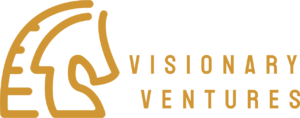Why Cold Calling Appointment Setting Still Works in a Digital-Driven Market
Cold calling appointment setting continues to hold strong value even as more businesses lean heavily into digital marketing channels. Many prospects are overwhelmed with emails, social ads, and automated outreach, making a personal phone call stand out more than ever. A real human voice creates a level of trust and urgency that digital interactions often fail to deliver. When done effectively, a cold call can quickly identify whether a potential client is a good fit or not, saving businesses time and resources. It also allows for immediate feedback, giving callers the chance to adapt messaging on the spot. This real-time interaction contributes to stronger connection-building and better appointment-setting outcomes. Despite the rise of automation, human-to-human communication remains one of the most persuasive tools in the sales process.
Building a Strong Foundation: Understanding Your Ideal Prospect
Before picking up the phone, it’s crucial to know exactly who you want to reach and why they should be interested in what you offer. Understanding your ideal prospect makes each call more targeted and meaningful. A well-researched caller understands the difference between a decision-maker and a gatekeeper, and tailors communication accordingly. It also helps to identify what problems your prospects may be facing so your messaging aligns with their needs. Many successful appointment setters create customer profiles to guide their approach and maintain consistency across their calling efforts. This preparation increases confidence and helps eliminate guesswork during conversations. The more aligned your understanding is with your prospect’s situation, the stronger your chances are of securing an appointment.
Crafting a Compelling Cold Call Script That Drives Action
A strong script is the backbone of effective cold calling appointment setting because it creates structure without limiting personality. Crafting a script involves clearly stating value within the first few seconds to capture interest quickly. A compelling script avoids lengthy introductions and instead moves straight into how you can help the prospect. Personalization also plays a major role, allowing you to adjust your message based on the industry or specific challenges a prospect faces. A well-prepared script includes open-ended questions to spark conversation rather than monologues. You can also prepare alternative phrasing to use when the call isn’t flowing as expected. Consistency, structure, and adaptability combine to create scripts that support better appointment results.
Subhead: Effective Cold Calling Script Elements
- A clear opening statement
- A short value-driven message
- Questions that uncover needs
- Positive and confident wording
- Brief explanations of benefits
- Smooth transitions into the ask
- Flexible variations for different responses
Mastering Voice, Tone, and Delivery
How you speak during a cold call often matters more than the actual words you use. Tone communicates confidence, sincerity, authority, and clarity, all of which influence how prospects engage with you. Speaking too fast or too slowly can negatively affect the flow of the conversation, so pacing must be intentional and controlled. A warm, friendly style encourages prospects to stay on the line longer and contributes to building rapport. Paying attention to vocal cues on both sides helps you know when to press forward or adjust your message. Many appointment setters practice reading scripts aloud to refine delivery and build comfort. Over time, voice mastery becomes a powerful asset that increases both trust and appointment-setting success.
Overcoming the Most Common Objections in Cold Calling Appointment Setting
Objections are a natural part of cold calling, and learning how to handle them can dramatically improve your results. Many prospects object simply because they are busy or unsure, not because they have no interest at all. When callers learn to anticipate objections, they can respond confidently and maintain control of the conversation. A calm, respectful tone helps lower resistance and keeps the prospect engaged rather than defensive. Appointment setters often prepare multiple response options to address the most frequent concerns, such as lack of time or skepticism. Turning objections into opportunities requires patience, strong listening skills, and awareness of the prospect’s perspective. Successful appointment setters see objections as part of the process—not a roadblock.
Leveraging Technology to Improve Efficiency and Results
Technology can significantly improve cold calling appointment setting by making each step of the process more organized and efficient. CRM platforms allow you to track conversations, schedule follow-ups, and maintain detailed prospect profiles. Auto-dialers help reduce downtime between calls and increase productivity during calling blocks. Analytics tools reveal how many calls convert into appointments, giving you valuable insight into performance. Recording calls provides strong training value for skill development and quality improvement. When used strategically, technology enhances your workflow without replacing the personal connection that cold calling requires. By integrating digital tools into your daily process, you can achieve higher appointment-setting consistency.
Time-Blocking and Productivity Strategies for High-Volume Calling
Cold calling requires discipline and structured routines to maintain high energy throughout the day. Time-blocking is one of the most effective strategies because it helps you focus all attention on calling during specific windows of time. Many professionals choose blocks when prospects are most likely to answer, such as late morning or late afternoon. Planning short breaks between blocks helps prevent fatigue and keeps performance sharp. Organizing your lead list before calling ensures a smoother process and reduces hesitation. Structuring your day also creates a rhythm that boosts motivation and productivity. Proper time management allows you to maximize calling volume while maintaining quality.
Metrics That Matter: Tracking the Performance of Your Cold Calling Appointment Setting
Data plays a major role in improving appointment-setting results because it highlights what is working and what needs improvement. Metrics like call-to-appointment ratio, average talk time, and number of daily dials help identify patterns. Monitoring these numbers allows you to make adjustments in your script or delivery when performance dips. Reviewing metrics regularly can also uncover opportunities to refine targeting strategies. Some callers discover that certain industries respond better, or that specific calling windows yield more appointments. Consistent tracking builds a data-driven approach, ensuring your efforts are strategic rather than random. With better insights, you can create more predictable and repeatable results.
Training and Coaching: Developing a Team of High-Performing Cold Callers
Ongoing training is essential for teams aiming to excel at cold calling appointment setting. Regular coaching sessions help reinforce best practices and introduce new techniques that improve performance. Role-playing activities allow team members to practice challenging scenarios in a supportive environment. Coaching also boosts confidence because callers gain feedback and learn how to refine their approach. Strong leadership ensures that training remains consistent and aligned with organizational goals. Encouraging team members to share experiences builds collaboration and motivates everyone to improve. A trained, confident team dramatically increases appointment-setting success across the board.
Ethical and Professional Standards in Cold Calling
Professionalism should always be at the core of every cold call, especially when speaking with busy individuals. Respecting the prospect creates a more positive experience and increases the likelihood of securing future conversations. Remaining transparent about who you are and why you’re calling builds trust. Honesty ensures that each interaction aligns with ethical standards and avoids misleading communication. Maintaining professionalism also means staying calm even when prospects respond negatively or appear uninterested. Ethical communication not only safeguards your reputation but also enhances long-term relationships. When transparency leads every call, the appointment-setting process becomes more productive and credible.
Frequently Asked Questions (FAQ)
What is cold calling appointment setting?
It is the practice of contacting potential customers by phone to schedule a meeting or consultation for further discussion.
How long should a typical cold call last?
Most cold calls last between one and five minutes depending on engagement and interest level.
Is cold calling still effective in 2025?
Yes. Human conversation remains one of the strongest tools for initiating business relationships.
What’s the best time of day to cold call?
Late morning and late afternoon are commonly considered the most productive calling windows.
How many cold calls should be made daily?
The number varies, but many professionals aim for 40 to 80 calls per day depending on industry.
Can scripts improve cold calling performance?
Scripts help maintain clarity and consistency, especially for newer callers.
How do you handle uninterested prospects?
Stay polite, thank them for their time, and move on without pressure to maintain professionalism.
Takeaway
Cold calling appointment setting continues to be a powerful strategy for generating qualified meetings and strengthening business pipelines. With the right preparation, strong voice delivery, effective scripts, and a data-driven approach, professionals can dramatically increase appointment conversions. Focusing on ethical communication, consistent routines, and ongoing skill development ensures long-term success in a highly competitive environment.
















